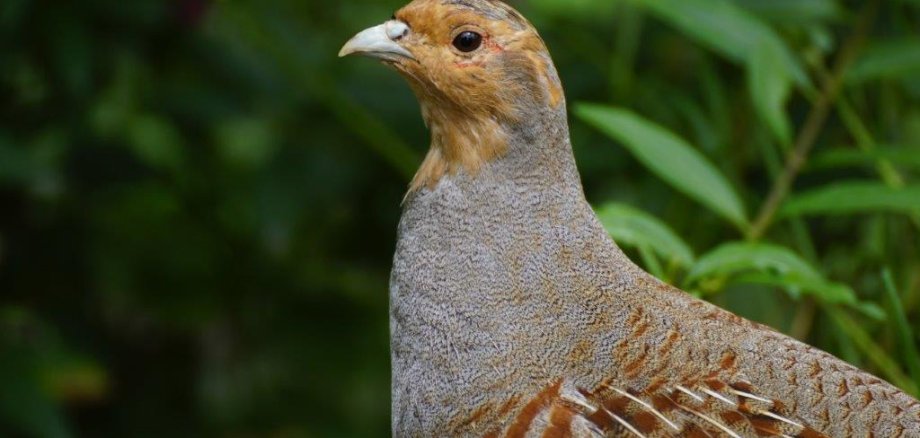Improve living conditions for partridges in Waldeck-Frankenberg
With the joint efforts of agriculture, nature conservation and hunting, the living conditions for partridges still present in Basdorf are being improved. District Administrator Dr Reinhard Kubat, who supported the Basdorf project with funds from the former Naturlandstiftung, recently visited the area to see the success of the measures - and thanked all those involved for their commitment.
"Nature conservation and species protection are important concerns for us that must be constantly promoted," says District Administrator Dr Reinhard Kubat. "The project in Basdorf exemplifies both - the preservation of cultural landscapes and the promotion of the habitat of rare animal species." The initiative is exemplary and worthy of support, he said. "We are pleased to be able to support the project with county funds."
The field landscape in Basdorf offers a good starting position to support partridges and other leading species of the agricultural landscape. Due to the cultivation of several special crops such as Christmas trees, salt willow, elderberry and rosebay, the environment is richly structured and thus very well suited for the partridges that are still present. The initiative started in autumn 2020.
In addition to information on the partridge's habitat and way of life, Nicole Schwarzer from the district's agricultural department and Andrea Imhäuser from the Hesse State Agricultural Office provided information on suitable measures and funding opportunities offered by the Hessian agri-environmental programme "HALM". Many of these measures were developed in the course of a field field project launched in Bad Zwesten in 2018.
With the financial support of the district, the people of Basdorf set up several feeding buckets as a first measure for the partridges and planted a 20-metre hedge of snowball, hard yew and blackthorn and hawthorn in the field. The persistent closed snow cover at the beginning of the year was a challenging time for partridges, as for other wildlife, as they were deprived of forage. The measures already taken were able to mitigate these conditions. In addition, local conservationist Heinrich Göbeler pushed the field paths clear by tractor to facilitate the partridges' mobility.
The initiative also benefits from close cooperation between farmers and the municipality. Field paths, for example, are mulched much less frequently in order to maintain structures and cover over the winter half-year. Together with the biodiversity advisor of the LLH, the farmers will create perennial, structured partridge flowering areas in the coming autumn, following the Bad Zwesten model. This is intended to promote the occurrence of insects, which at the same time are a vital source of food for the partridge chicks. Along these areas, information signs will point out the initiative and at the same time draw the attention of dog owners to the necessity of keeping dogs on a leash in this area.
